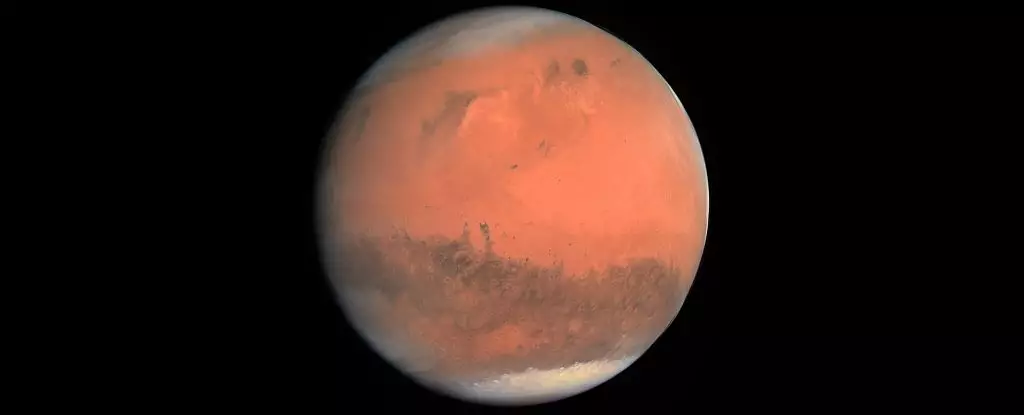Mars, renowned for its distinct reddish color, has captivated humanity’s imagination for centuries. Traditionally, this iconic hue has been attributed to the presence of iron oxide, or rust, originating from ancient geological processes. However, emerging research suggests that our past interpretations may be fundamentally flawed. A study led by planetary geologist Adomas Valantinas from Brown University has introduced a new perspective on how Mars acquired its characteristic color, emphasizing the crucial role of water in this process.
Historically, scientists proposed that the reddish appearance of Mars was primarily the result of hematite forming in arid conditions as water receded. Hematite is a form of iron oxide known to occur in dry environments, leading to the conclusion that Mars had lost its water long before it exhibited its familiar red hue. However, Valantinas and his team challenge this notion by presenting evidence that suggests ferrihydrite, another type of iron oxide that forms rapidly in the presence of water, could be responsible for Mars’s coloration. This shift in focus implies that the rusting processes contributed to Mars’s color occurred while the planet was still wet, significantly altering our geological narrative.
To validate their hypothesis, the researchers meticulously recreated Martian conditions in the laboratory. By mixing ferrihydrite with basalt, a common volcanic rock on Mars, they aimed to replicate the mineral compositions observed by various spacecraft. This hands-on experimentation is crucial, as it allows scientists to forge connections between laboratory findings and real Martian data. Notably, these lab-created samples exhibited striking similarities to the data collected from rover missions and Martian meteorites, underlining the significance of ferrihydrite in understanding the red planet’s past.
Valantinas’s team undertook a comprehensive analysis of Martian dust and utilized advanced techniques to compare their experimental findings with data gathered from orbiting spacecraft and rovers. Their efforts indicated that ferrihydrite, specifically represented by the formula Fe5O8H · nH2O, aligns more closely with the Martian dust than the previously favored hematite model. This revelation not only suggests that Mars was once abundant in liquid water, but it also implies that the processes of rusting and mineral oxidation were more complex than initially understood.
The implications of this research extend beyond the mere color of Mars; they illustrate the planet’s evolving geological history. By recognizing the timeline of when oxidation processes occurred, we gain insights into the presence of liquid water and the environmental conditions that prevailed during Mars’s formative years.
This newfound understanding leads to significant questions regarding Mars’s present and future. The stability of ferrihydrite under current Martian conditions hints at a planet that may still harbor remnants of its wet past. Furthermore, the research provides a compelling framework for future missions, particularly those aimed at collecting Martian samples. As rovers and satellites continue to explore the surface of the red planet, these findings may develop into a cornerstone of Martian exploration, guiding how scientists interpret future data regarding Mars’s climatic evolution.
The vibrancy of Mars’s red surface, while emblematic of its identity, holds layers of complexity regarding planetary history. Through the innovative research spearheaded by Valantinas and colleagues, our comprehension of Mars’s oxidation processes has deepened, suggesting that the iconic red planet may have been rusty well before water vanished from its surface. As scientists embark on subsequent missions to uncover more secrets of Mars, it is clear that this fascinating world is replete with mysteries yet to be solved, each shedding further light on the tantalizing possibility that Mars was once alive with water. The journey of discovery continues, illuminating the rich history of our neighboring planet and transforming the narrative of Mars from that of a barren landscape to a once-thriving world.

